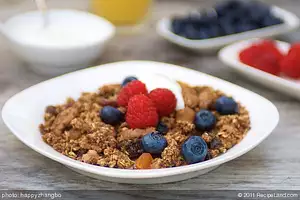It is always best to bring home in-season produce from the grocer or market. While out of season or imported fruits and vegetables may still be available, and perfectly suitable for purchase, buying locally grown options will provide the freshest flavors. Spring and summer harken the arrival of juicy berries, fragrant melons and all kinds of nutritious vegetables and greens. The following tips show you how to choose and keep the freshest options, while avoiding those that are over-ripe.
Ripe honeydew and cantaloupe should give off their distinct “melony” smell from the circle left from the stem. The opposite side of the melon should feel slightly soft by pressing gently. Overly ripe melons will give too easily.
Watermelons should produce a mildly hollow sound when you thump them with your knuckles. Some watermelons have a yellow spot on the bottom, and may not be fully round. This is just a sign that they were grown to ripeness resting on the ground – this is especially noticeable in larger, heavier varieties.
When selecting fresh corn look for moist green husks with dark brown silks. Peel back the husk to make sure the kernels are fresh and plump – if you press a kernel with your fingernail it should release a little milky liquid. Fresh corn is best eaten shortly after harvesting or purchasing.
Only choose berries that appear fully ripe, with no sign of mushiness, moisture or mildew. Blueberries should be dark blue color with lighter blue tints – avoid pink berries that have not ripened.
Eggplant should appear glossy with a deep purple/black skin. Avoid any eggplants with soft or brown spots and skin that looks dull or matte.
Cucumbers should be dark green and firm. If they are starting to turn a yellowish color, they are over ripe. As for zucchini and summer squash, opt for smaller vegetables that will be more tender than largely and seedier ones. If growing your own, squash blossoms are edible and can be used in salads or to stuff with ricotta cheese and sauté for a delicious treat.
Tomatoes are best when ripened on the vine. Many grocers sell ripe tomatoes still on the vine for this reason. Ripe tomatoes should be firm to the touch and only yield slightly when pressed. Look for shiny skins and vibrant colors depending on the variety. If the tomatoes are just under-ripe, leave them out on the counter for a day or two – never refrigerate or they can become mealy and lose their fresh flavor.
Basil should have spotless glossy leaves. It bruises easily and should also be kept out of the refrigerator. Basil and other herbs, such as oregano, rosemary, thyme, marjoram, sage, dill, parsley and cilantro are all very forgiving plants that can be grown easily in pots with plenty of sun. The same can be said for tomatoes and salad greens.
With a minimal amount of space, even a small outdoor patio or balcony, even those of us with the brownest thumbs can grow fresh, nutritious – not to mention free – organic produce. All you need are a few pots with adequate drainage, organic potting soil and a watering can. Store bought produce cannot compare to the freshness and quality of harvesting your own.










Comments